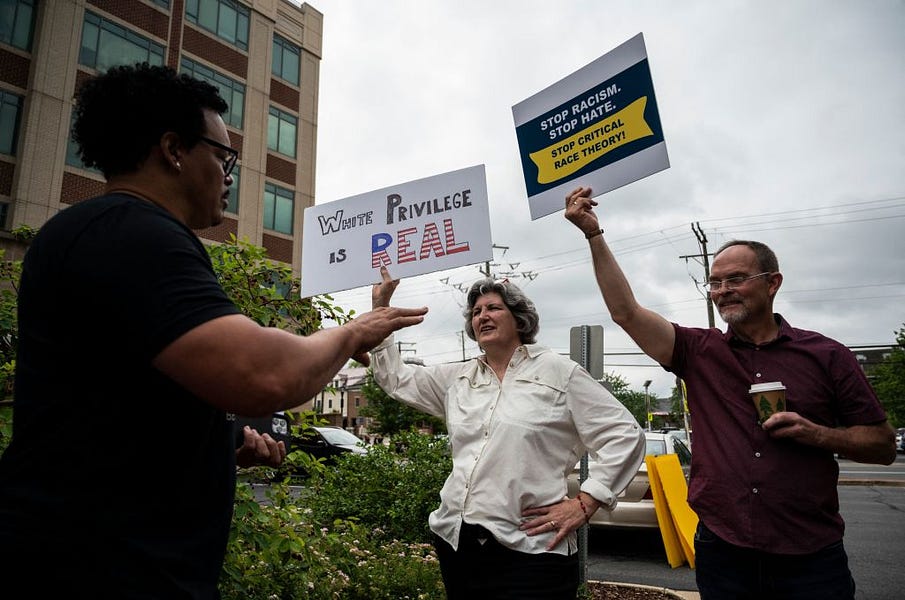Put aside what you may have heard—pro or con—about terms such as systemic racism or critical race theory (CRT) for a moment. There’s a lot of exaggeration out there among both defenders and critics.
Instead, let me tell you a story.
After the civil rights movement achieved its legislative goals in the 1960s, formal, legal racism was largely abolished. Yes, there was cleanup work to do in various states. But broadly speaking, deliberate discrimination was no longer protected by the law. There was still cultural racism, of course—and there still is. But looking at the big picture, the tumor of deliberate racism has shrunk on a staggering scale.
This was the result of a massive legal, social, and educational effort. And it was a huge success that all Americans should take pride in. Racism isn’t an American phenomenon; it’s a human one that exists everywhere. But few societies have worked as hard to battle it as the United States has over the last half-century.
And yet, disparities persist. Black Americans comprise 13 percent of the population but fall short of that percentage in a number of important areas—the ranks of affluent, the college educated, and a large number of professions we normally associate with affluence and education.
CRT, structural racism, institutional racism, etc., represent efforts to explain why.
It’s no accident that law schools and lawyers were at the vanguard. If you wanted to sue a business or agency for “disparate impacts”—e.g., the underrepresentation of minorities in certain jobs or unequal lending by banks—you needed to show that these disparities were the result of deliberately bigoted policies. The problem: Evidence of the disparities remained abundant while evidence of racist intent largely vanished.
Enter critical race theory, which looks for systemic problems that perpetuate disparities even when no one in power intends them. These structural policies could be legacies of decisions made long ago that had racist intent behind them, or they could simply be the unintended consequences of rules people thought were neutral.
For instance, in 2018, 1,197 people in America received a Ph.D. in economics. Of those, 18 were black. I’m skeptical that attributing this underrepresentation to deliberate racism is a suitable explanation. Universities are almost as desperate to diversify their faculties as they are to diversify their student bodies. But the underrepresentation exists all the same. And it’s worth asking: Why?
I won’t try to answer the question here, but reasonable people can point to any number of plausible explanations. One involves systemic problems in the larger culture. And some of those problems have to do with the legacy of racism, slavery, and Jim Crow. We can differ on how much weight to give those factors.
It’s also worth considering whether such underrepresentation is necessarily that big a problem. On one level, disparities by race, gender, religion and other categories have to do with individual choices. Nearly 84 percent of doctors specializing in obstetrics and gynecology are women, and roughly the same share of orthopedic surgeons are men. It’s not crazy to think this is largely the result of individual choices by individual women and only seems like a problem if you think the percentage should be perfectly proportionate to the share of women in the population. Forcing women into professions they don’t want to enter doesn’t strike me as a feminist victory.
None of this is to say that all is fine for blacks in America. Black poverty rates are a serious problem, as are disparities in wealth and education. To the extent that critical race theory looks for explanations and remedies to these problems, there’s nothing to object to as far as I can tell. I might disagree with the explanations and the remedies some theorists propose, but I’m at a loss to understand why the effort to find them is anything but laudable.
Here’s the problem: The stuff passing itself off as CRT in the national debate isn’t really that. An academic tool invented to help explain why racial problems endure even when conscious racism is no longer pervasive has morphed into a cudgel to accuse people of racism if they don’t agree with the proposed diagnosis or the cure.
Defenders of CRT are often right when they say opponents are distorting what it means. But those same people often pretend that America hasn’t made enormous strides in fighting racism and claim that racism today remains the only explanation for the problems created by racism of the past.







Please note that we at The Dispatch hold ourselves, our work, and our commenters to a higher standard than other places on the internet. We welcome comments that foster genuine debate or discussion—including comments critical of us or our work—but responses that include ad hominem attacks on fellow Dispatch members or are intended to stoke fear and anger may be moderated.
With your membership, you only have the ability to comment on The Morning Dispatch articles. Consider upgrading to join the conversation everywhere.